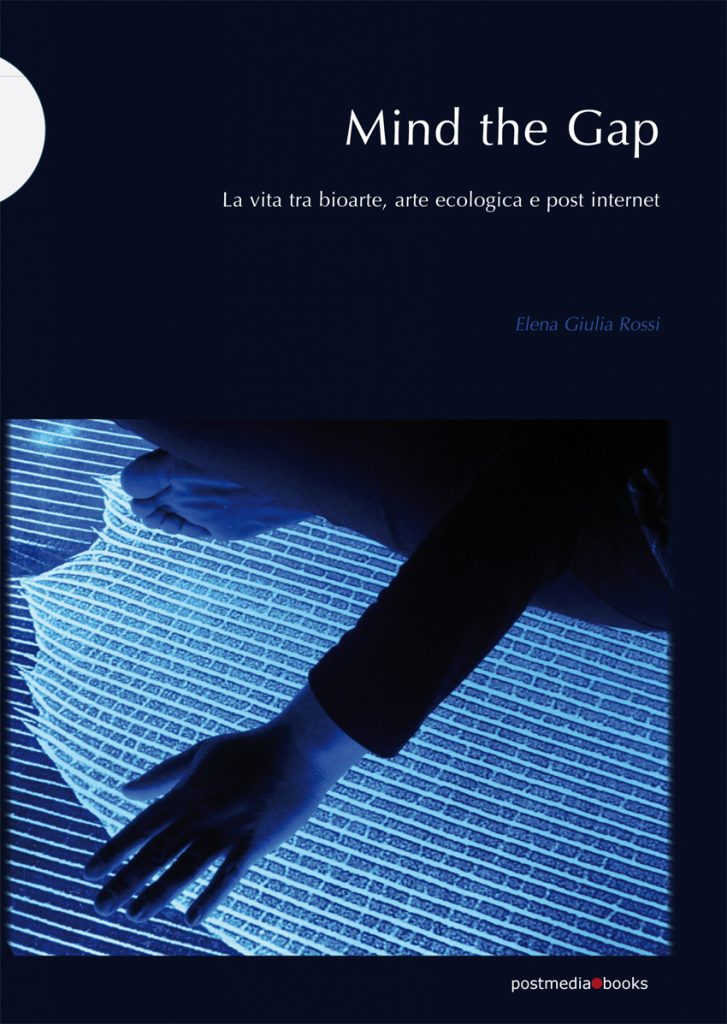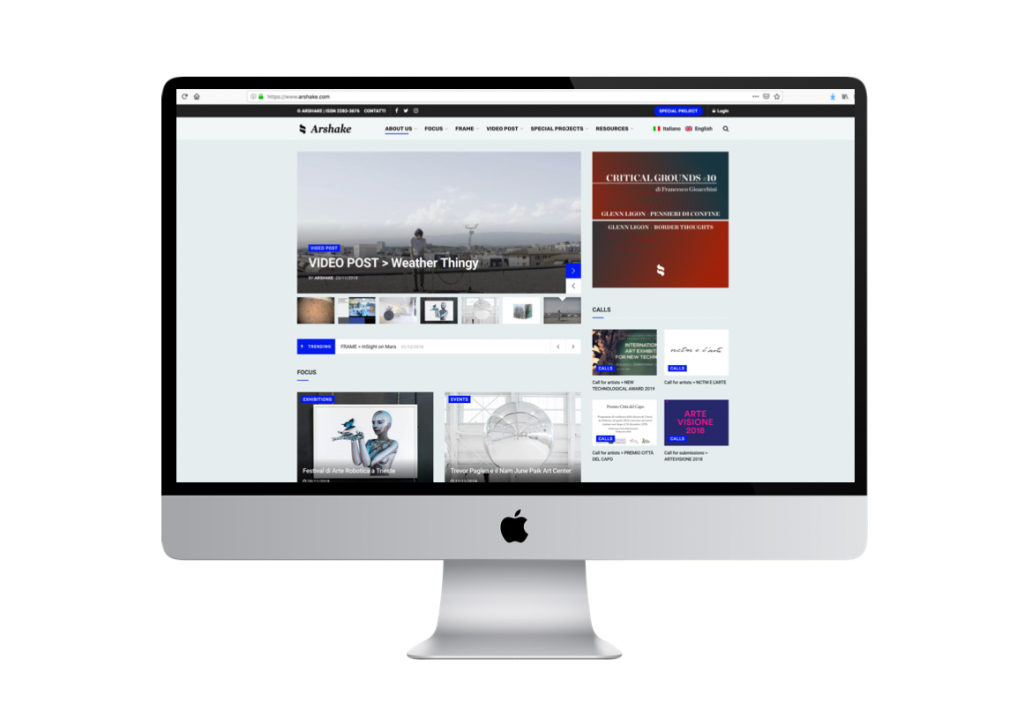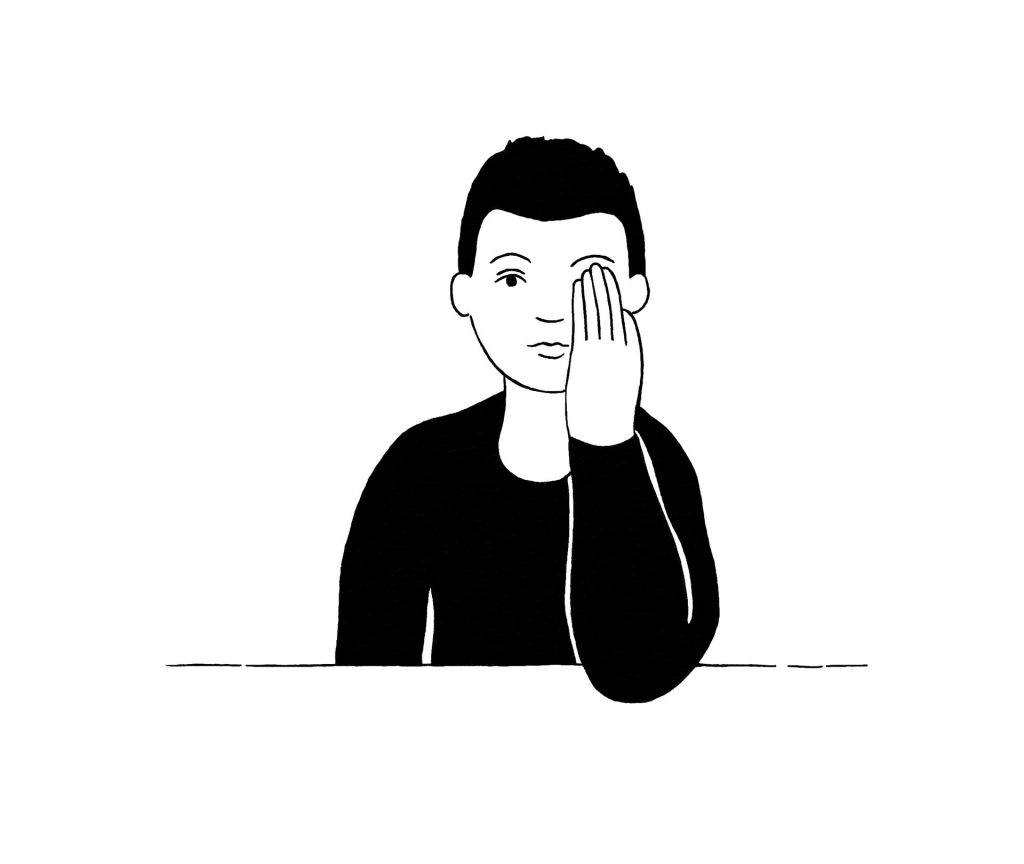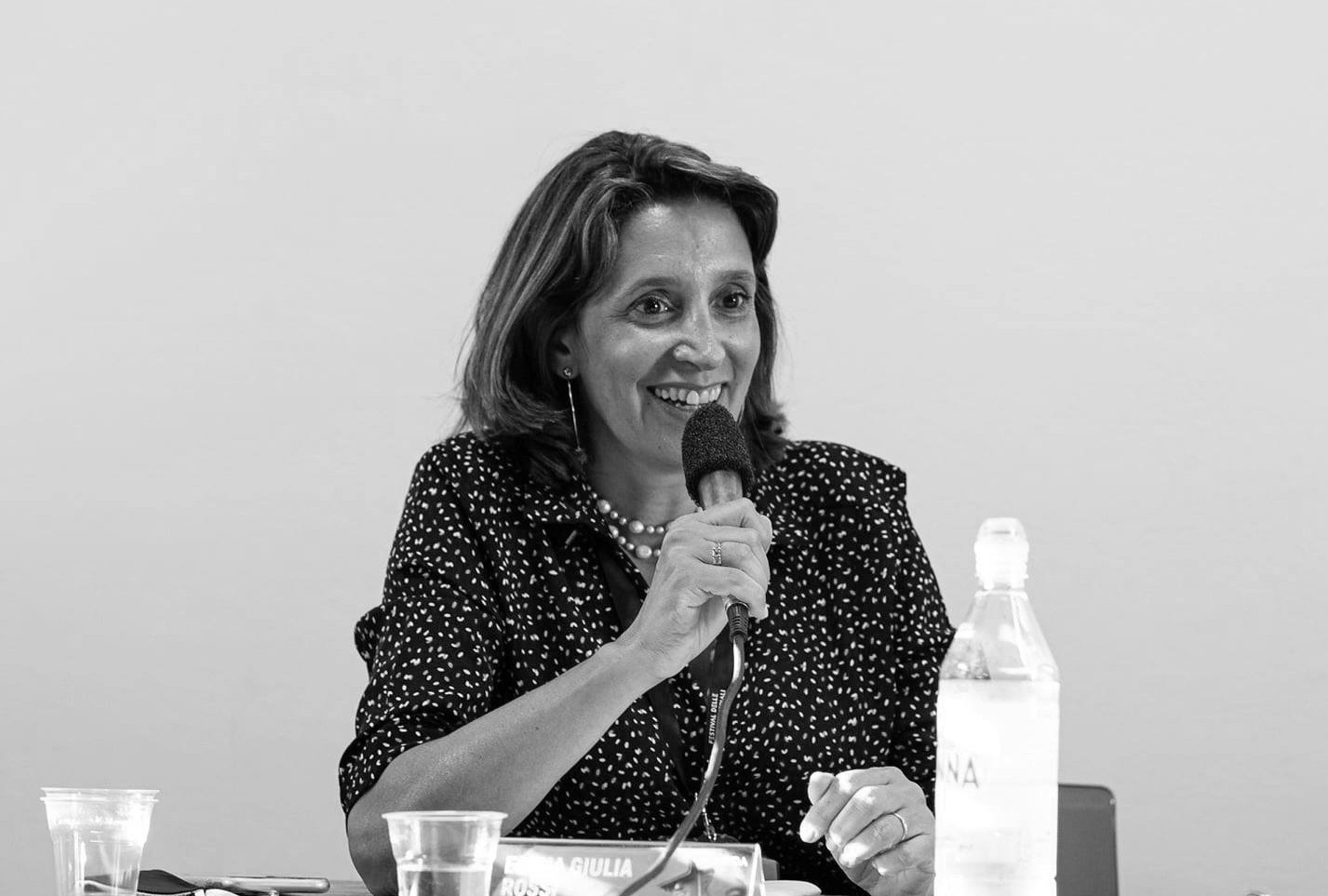ELENA GIULIA ROSSI
Generazione Critica: How did you arrive, inside your education, from a management approach to art and culture to an interest in research in the field of net art and multimedia arts? How do you manage to combine these two fields of research?
Elena Giulia Rossi: I actually started working in art while I started doing research on these topics. I was living in Chicago in the years when net art and new media art emerged between the lines of mailing lists and rare publications dedicated to this subject. I would say that management and research always go hand in hand, or at least they should. It is not easy at all. Certainly, in the years in which I curated the project for the MAXXI (NetSpace and NetinSpace, 2005 – 2010) the time for research was not much and I was mostly focusing on practice the research done in the previous years. The years spent between library and archive (2011 – 2013), with the construction of a section dedicated to media art (still available today at the MAXXI Library), allowed me to go back to the research in a more in-depth way, that found a result on the Arshake platform. Arshake was born from the need to create an archive and to connect hybrid languages with a transversal cut. New media art, traditional art and science, but not only. The ‘platform’ format was the most suitable for flexibility and archive capacity.
GC: Among the topics addressed by “Archeonet” (Lalli publisher, 2003) there is the question of archiving inside museum spaces or digital spaces. Your studies in the digital and transdisciplinary field allowed the question of the immateriality of works on the net: this topic was analyzed both from a market and archiving point of view. How do you see this issue almost twenty years after the publication of Archeonet?
EGR: Thank you very much for bringing Archeonet to light. It is a very dated publication when these creative approaches were still in the process of being recognized. There was a need to categorize in order to give a name to experiences that are difficult to communicate outside the narrow circle of enthusiasts who were interested in them. The categorizations are as necessary as dangerous over time. There was a time when these terms, such as net art and web art, were no longer suitable to indicate projects that, in following the evolution of the internet, changed towards increasingly radical encroachments and contamination with the physical world. However, today I realize that in this type of publications, made ahead of the curve, it is possible to recover traces of passages deleted by acceleration. Then of course, the fact remains that some terminologies crystallize over time and they need to be changed. About the market and the archive, artists have always sought and found sales and certification systems. Today it is possible to see the same questions of before, despite the fact that the NFT phenomenon has sucked into its vortex more than twenty years of history and research on digital art that has nothing to do with the auctions. As has always happened, artists are moving to slowly build a counter-market where NFT-certified sales can generate the dissemination and circulation of digital art works at affordable prices and through curated exhibitions (see, for example, the Feral Files project by Casey Reas).

Elena Giulia Rossi, Mind the Gap, Postmediabooks
GC: Your interest in transdisciplinary approaches has broadened the fields of your research up to nanoart or bioart. This investigation has merged into the book Mind the gap (Postmedia books, 2020). What is the structure of this connection between artistic practice and the fields of biology, ecology and technologies applied to scientific research?
EGR: It was the research of the artists that brought me into other fields and disciplines such as biology and ecology. They are the ones who have traced the path. The practical and theoretical work of Eduardo Kac, for example, known worldwide for his transgenic fluorescent rabbit Alba (GFP Bunny, 2001), has its roots in language, from poetry to telematics, to every type of dialogic aspect that is established between different species. The work with the nano-science of Victoria Vesna continues the research focused on the relationship between body and data. Over time I have deepened these areas, such as bioart, nano art, ecological art in their specificity. The continuity between them and with the whole became clear only at a later time. It is probably a physiological step as feeling the need to resort to terminologies and categorizations.
GC: The ecological question is a central theme in both artistic and curatorial practices. How can cultural institutions and scientific research find common ground on which to work to re-establish an ecological balance inside the environmental and social levels?
EGR: I was very interested in personal research on ecology. The first article on art and climate was published in the magazine “Cura” many years ago. But the continuation of this research is entirely due to prof. Pier Luigi Capucci who has involved me several times in his “art*science: art and climate change”, a three-year project of exhibitions, events and publications, started when these topics were not yet at the center of everything.
“GAME OVER. Future C(o)ulture” is another project which deals a lot with ecology. Conceived and promoted by Anita Calà with the VILLAM association and created with me and Arshake and with the many people who over time are joining the project, is imagined as a large growing organism that changes with ideas and projects that everyone brings in. GAME OVER looks at the ecological theme actively by including technologies and scientific progress, trying to re-establish a balance between what in the ancient conception we considered as ‘nature’, and its new encroachments.
The land and the soil, that of Quinto Sapore, the company where Alessandro Giuggioli has been carrying out his research on ancient cultivation techniques for years and keeps ancient seeds for the CNR of Perugia, is the beginning of the journey. The young researchers invited to the residence (from different disciplinary fields, such as biology, robotics, AI …) will continue their research by finding contact with the earth. It is possible that some of them will be engaged in works that are directly related to agriculture.
We are convinced – with us are also many professionals who come from the world of science – that to address the ecological question we must start from the regaining of awareness, from training, from contaminating (real and not told). This can only happen gradually, over time, and by comparing different generations. The junior figures will be followed side by side by colleagues from other disciplines and they will start a chain of relationships that will grow over time and will make room in different fields and disciplines to return all this to the territory of the City of Pieve, where the project started, and of the territories where the project will adapt with replicable models, also attentive to communication between the countryside and the city.

Arshake.com. Schermata con interfaccia e logo (Cristian Rizzuti)
GC: Arshake is another context that experiments with transdisciplinary and transversal research: how do you treat the relationship between art and technology within this virtual space? What are the methodologies with which you try to maintain a balance between the various opposites taken into consideration, such as the web and the world, technology and artistic expression, the past and the future?
EGR: Arshake presents itself as a connecting and fluid space crossed by technology and the world not in opposition, rather united by different aspects of a single eco-system. In the first years of the platform’s life, with great pleasure we were approached by authors and artists from other disciplines, dance, scenography, science and much more. The connection between the various disciplines emerged in a completely natural way.
Today there is much talk of trans-disciplinarity, hybridization, coexistence between organic and inorganic. Twenty years ago these arguments did not exist in common speech. Arshake itself, which was born as a liquid container to accommodate different experiences under the same common denominator, was considered a niche product, a little out of reality and out of the system. Hybridization and cross-contamination are terms that have very recently entered the common language, repeated with so much insistence and effectiveness that they have become to some extent consumed. Today’s difficulty is to resume the ranks of a process that has always evolved even though it seems to have suddenly exploded. This sort of hallucination reiterates itself over and over again, now with NFTs which generate discussions about digital art as if it were something new.
Here the discourse between past and present comes in. The fact of giving space to the past (on the platform there is a section dedicated to news from the past) is precisely to reconstruct a continuity of research and history, to bring to light ‘ancient’ facts that are still current and explain some passages that reveal themselves as important links in history and its continuity.
In general, Arshake is not specifically concerned with new media art, traditional art and technology, or art and science. They certainly have always had, and still have, great space. Arshake looks at the world through the gaze of technology and technique, and analogue techniques are also included. This is the starting approach, the rest took shape very spontaneously.
GC: Arshake proposes the online archiving of a series of textual and audiovisual materials, how is all this material produced by the editorial work managed? Are there experiences of printed publications or the will to think about new, perhaps virtual, ways of presenting an archive?
EGR: At the root of Arshake there has always been the idea of an archive as an ecosystem where works, information and insights, as well as the works created on the banner, inhabit the same space and become contaminated. The work of the archive is a work that we will start shortly, and we are really thinking of creating a hybrid publication, between paper and online. The book will function as an index and gateway to online content.
GC: In the context of Arshake, initiatives like “Banner Video Post” and “Frame” focus on artistic expression and collaboration with various artists. How is the selection and publication of these multimedia contents organized? How do they communicate with the other contents on the platform?
EGR: The works on the banner were born in a very spontaneous way in dialogue with the artists. The invited artists are free to extend their work by experimenting this space. Some are digital natives, others have accepted the challenge of translating an entirely physical work into the elastic space of the banner. I am thinking, for example, of Girolamo Marri and his “Jelly Ghosts“(2014) who brought his performance onto the screen with 88 videos and as many situations that appeared out of nowhere every time the page was updated. Or even to Cristina Elias with her “One Minute Diary” (2014) who translated her work with body and dance within the video and in the space of one minute. With “For a Forthcoming reality”, 2020, curated by Gianpaolo Cacciottolo, Antonio della Guardia inhabited the banner of Arshake with an animated drawing where a series of exercises formulated by William Horatio Bates in the first decade of the twentieth century are adapted to modern times to recover the eyes after many hours of online work. Luigi Pagliarini’s work, “Energies Visualizers”, brings his work with neuroscience and Artificial Intelligence to the two-dimensional plane in order to experience the forces of digital matter.
Each artist enters into dialogue with Cristian Rizzuti, art director, creator of the logo and important member of Arshake. It is important to talk together from the beginning about the project and every time it comes the publication there are some challenges or surprises.
Each time the situations are different, each time unexpected. Everything is clear only after the launch of the work, exactly as it had happened for Arshake platform that floated online for at least seven months until we were convinced to take the plunge and publish it. in the following two weeks, the project changed a lot, with the indispensable contribution of the visionary advice of Antonello Tolve, director with Stefania Zuliani of the Critical Grounds section – born from the desire to put valuable and culturally interesting books online in open source. From there we understood that anything, even the simplest and most linear things, comes to life when it comes online and starts interacting with users.

Antonio della Guardia, Per un prossimo reale, 2020, progetto a cura di Gian Paolo Cacciottolo realizzato per il Banner di Arshake (Special Project #17), Courtesy l’Artista e Galleria Tiziana di Caro
GC: Has the pandemic situation, from emergency to almost constitutive, influenced the direction of Arshake? What changes and what considerations did it lead to? Was it an engine towards new directional solutions or different degrees of interaction with users?
EGR: The pandemic made us think a lot. As soon as the whole world went online, we asked ourselves about Arshake, about virtual spaces, about the meaning of our work. It wasn’t easy at all. In some respects it is still not easy. After a few months of online life, everything seemed ‘old’ to us. Even the birth of new platforms, the dissemination of these topics on various magazines made us rethink our role. We are not competing. We acted as a space that could host the thoughts, information and works of those who recognized themselves in this space in a large archive. Now perhaps the next step could be to create a network and a constellation of related spaces. We have always carried out this discourse, and it is part of Arshake’s methodological approach. We have often republished articles translated from English to Italian or vice versa and relaunched their sources. Focusing more on this aspect could be an important step in a possible future evolution.
In any case, the reflections that we had during the pandemic are still ongoing. But there has been a change and this too has happened in a truly natural way and I realized it a short time ago. More and more we have received requests for partnerships for research projects, long-term publications, such as «The Eternal Body. The human senses as a laboratory of power, between ecological crisis and transhumanism “by Elena Giulia Abbiatici, a project supported by the Italian Council (IX edition 2020), the series of interviews by Kisito Assangni on “curating as a phenomenological history of everyday life”, the project that we have been supporting as a partner for four years with Romaeuropa Festival and Accademia di Roma, or the GAME OVER section itself that we started in 2020 with a series of interviews carried out in the period of the pandemic and over a year and a preliminary research project “(Loading)”. While we were reflecting on Arshake’s existence, the platform had already decided on its continuation, at least one of many possible ones. These projects tell of the need for research, but also for gradualness. Publishing research in episodes allows you to find contact with the reader during the research, a deferred dialogue which could benefit the research and the wealth that this will produce in return.
VIDEO POST and FRAME are two sections curated by Cristian Rizzuti. Beside that we work remotely and beyond what these sections mean for research – for us they are two very important spaces that communicate in a more exclusively visual way – his choices in these two sections build a sort of dialogue between us, without saying that very often they respond to ongoing research almost by telepathy.
GC: As a teacher of Net Art and multimedia arts theory you have a privileged point of observation on the interests of the students and therefore, generalizing, on a generation of artists. What are the most significant aspects, both of breaking and of continuity in student practices?
EGR: The very first lesson I gave at the Academy, nine years ago, I discovered that kids born in the digital world had no idea that technology had, and could have, a creative side. This is the first of many things that take me by surprise every year. Everything I took for granted that they liked or that they knew turned out to be the opposite. Every year I discover something new. I believe that right now we are facing a generation that could become a break. But still it’s all to focus on.
These pandemic years have been very difficult for teaching. It is difficult to establish contact online (implying that it was a great opportunity to continue the work). It is even more difficult to get to know them and understand where their research is going. I hope this will happen later now that we get back to having physical contact. Despite this, even in this moment of ‘darkness’, when we are not yet able to see with an external and lucid eye, there were several things that literally surprised me.
During the first lockdown, the online teaching experience began as traumatic. Then I asked them, for those who wanted to do it, to write a diary that could connect their life experience, in terms of space and time, with what we were talking about. It came spontaneously to start with works that went into the world of nano-science and molecular biology to reveal what is invisible around us. These are very current issues. Few people attended during the lesson. I remember closing the computer in the last lesson with great frustration, a huge sense of emptiness and defeat. When it was time for exams, I received some beautiful diaries. Each of them had used the tool that could inspire the most. To my surprise, many of them experimented with materials: someone created a diary with polaroids, someone else used illustration and others used the traditional form of the written diary. Everyone has put themselves in the diary, both in the contents and in the modalities. I understood that a methodology based on the contact can exist inside the online relationship only by cultivating the space and time that elapses between one online meeting and another.
Elena Giulia Rossi lives and works in Rome. Her research in contemporary art has led her into transversal and transdisciplinary ambitions, at the crossroads of biology, technology and science. Her work experiences moves between practice and theory, with museums, galleries, magazines and newspapers, with the Arshake online platform (www.arshake.com) and with teaching activities at the Academy of Fine Arts in Rome where he teaches net art and multimedia arts theory. She is the author of “Archonet. Journey into the history of net / web art and its entry into traditional museums” (Lalli Editore, Siena 2003) and “Mind the Gap. Life between bioart, ecological art and post internet” (postmedia, Milan, forthcoming 2020).
Copyrights ©METRONOM
24/02/2022

